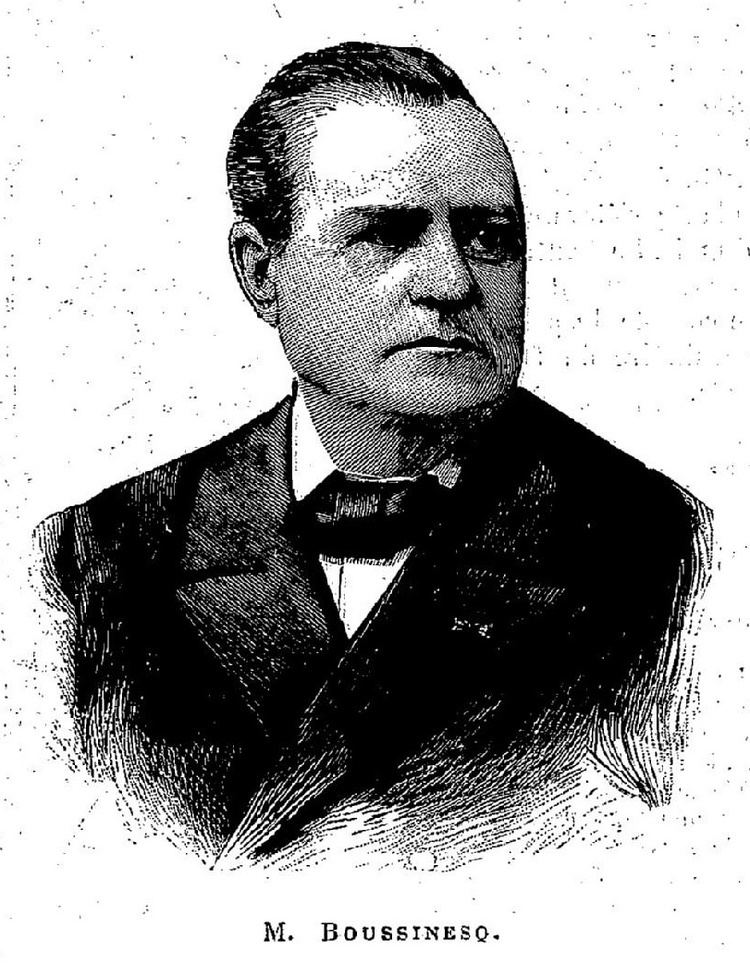Nationality French Name Joseph Boussinesq | Role Mathematician | |
 | ||
Alma mater Faculty of Sciences of Paris Known for Boussinesq approximation in:buoyancywater wavesturbulence Died February 19, 1929, Paris, France Education Pierre-and-Marie-Curie University | ||
Joseph Valentin Boussinesq ([ʒɔzɛf valɑ̃tɛ̃ businɛsk]) (13 March 1842 – 19 February 1929) was a French mathematician and physicist who made significant contributions to the theory of hydrodynamics, vibration, light, and heat.
Contents
Biography
From 1872 to 1886, he was appointed professor at Faculty of Sciences of Lille, lecturing differential and integral calculus at Institut industriel du Nord (École centrale de Lille). From 1896 to his retirement in 1918, he was professor of mechanics at Faculty of Sciences of Paris.
John Scott Russell experimentally observed his great solitary wave of translation in 1834 and reported it during the 1844 Meeting of the British Association for the advancement of science. Subsequently, this was developed into the modern physics of solitons. In 1871, Boussinesq published the first mathematical theory to support Russell's experimental observation, and in 1877 introduced the KdV equation. In 1876, Lord Rayleigh published his mathematical theory to support Russell's experimental observation. At the end of his paper, Lord Rayleigh admitted that Boussinesq's theory came before his.
In 1897 he published Théorie de l'écoulement tourbillonnant et tumultueux des liquides ("Theory of the swirling and agitated flow of liquids"), a work that greatly contributed to the study of turbulence and hydrodynamics.
The word "turbulence" was never used by Boussinesq. He used sentences such as "écoulement tourbillonnant et tumultueux". The first mention of the word "turbulence" in French or English scientific fluid mechanics literature (the word "turbulence" existed in other context) can be found in a paper by Lord Kelvin in 1887.
